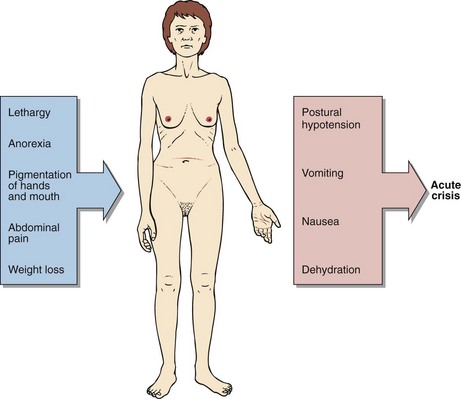48 Acute adrenal insufficiency is a rare condition that if unrecognized is potentially fatal. Because of its low incidence it is often overlooked as a possible diagnosis. It is relatively simple to treat once the diagnosis has been made, and patients can lead a normal life. The clinical features of adrenal insufficiency are shown in Figure 48.1. In areas where tuberculosis is endemic, adrenal gland destruction may be due to TB; in developed countries autoimmune disease is now the main cause of primary adrenal failure. Both cortisol and aldosterone production may be affected. Secondary failure to produce cortisol is more common. Frequently, this is due to long-standing suppression and subsequent impairment of the hypothalamic–pituitary–adrenocortical axis from therapeutic administration of corticosteroids. The causes of adrenal insufficiency are summarized in Figure 48.2.
Hypofunction of the adrenal cortex
Adrenal insufficiency
Hypofunction of the adrenal cortex





